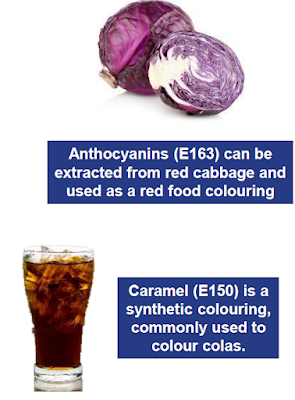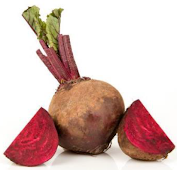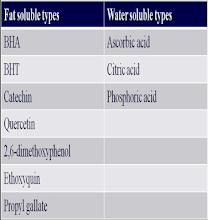${tocify}
What are Food Additives?
‘It is a substance or mixture of substances, other than the basic food stuff , which is present in food as a result of any aspect of production, processing, storage or packaging. This term does not include chance contamination.
‘Additives are not considered nutritional even if they have some nutritive value.’ ‘Means any substance not normally consumed as food by itself and not normally used as a typical ingredient of the food.’ The term does not include contaminants or substances added to food for maintaining or improving nutritional qualities.
Importance of food additives
- Unavoidable in the complex and integrated society in which the area of food production are separated from areas of consumption.
- In present degree of urbanization, its impossible to maintain distribution network without adding preservatives.
- Great demand for convenience/ready to eat foods and heat and serve products.
- Essential to prevent rancidity of oils and for maintaining the shelf life of high moisture containing foods.
- Food additives must not be used to disguise faulty processing and handling techniques to cheat customers.
- Foods are subjected to many environmental conditions, such as temperature changes, oxidation and exposure to microbes , which can change their original composition
- Food additives play a key role in maintaining the food qualities and characteristics that consumers demand, keeping food safe, wholesome and appealing from farm to fork.
What are E numbers?
According to European Food Safety Authority, 2019
An E number is given to an additive to show that it has been approved for use in the EU (‘E’ stands for Europe). The European Food Safety Authority is responsible for regulating E numbers and making sure they are safe for consumption. E numbers apply to all additives , regardless of whether they come from
natural sources or are man made. E numbers are individually approved for use in different foods. This means that an E number cannot be used in any food, but only in a list of foods that it is approved for, where it is deemed appropriate and safe.
Types of additives
Additives may be -
Natural
- found naturally, such as extracts from beetroot juice (E162), used as a colouring agent.
Synthetic
- man made identical copies of substances found naturally, such as benzoic acid (E210), used as a preservative.
Artificial
- produced synthetically and not found naturally, such as nisin (E234), used as a preservative in some dairy products, pasteurised liquid eggs and in semolina and tapioca puddings.
Preservatives
- Prevent the growth of micro organisms which could cause food spoilage and lead to food poisoning.
- Extend the shelf life of products , so that they can be distributed and sold to the consumer with a longer shelf life.
- Salting and sugaring are two of the oldest methods of preserving food.
For example Meats are often treated with nitrite and nitrate (E249 to E252) during the curing process.
Common Food Preservatives
- Benzoates.
- Sorbates including potassium sorbate, calcium sorbate and sodium sorbate.
- Propionates.
- Nitrites
- Sulfites , including sodium sulfite , sodium bisulfite, sodium metabisulfite, potassium bisulfite and potassium metabisulfite
- Vitamin E (tocopherol)
Antioxidants
Antioxidants prevent oxidative rancidity in foods high on fats and oils. Another important reason is that certain vitamins and various amino acids can easily be destroyed by exposure to air, and antioxidants serve to protect them.
Antioxidant types
- Water soluble (synergistic) type
- Fat soluble type
Naturally occurring substances that act as antioxidants are tocopherols , but they are rarely used as additives because they are more expensive than synthetic antioxidant. They are effective in low concentrations (0.01 - 0.02%). Mixed antioxidants sometimes act synergistically.
‘Mostly Antioxidants prevents the browning of cut fruits ,vegetables and fruit juices i.e. increase shelf life and appearance.'
Food Colours
Food colouring is added to foods to replace lost colours during preparation, or to make foods look
more attractive.
In the USA there are seven artificial colourings that are permitted in foods.
- FD&C Blue No. 2-Indigotine
- FD&C Green No. 3-Fast Green
- FD&C Red No. 40-Allura Red AC
- FD&C Red No. 3-Erythrosine
- FD&C Yellow No. 5-Tartrazine
- FD&C Yellow No.6-Sunset Yellow
Why use Colour additives?
- Restore colour lost during processing or storage
- Ensure that each batch produced is identical in appearance or does not appear ‘off
- Reinforces colour already in foods, e.g. enhance the yellowness of a custard
- Give colour to foods which otherwise would be colourless ( e.g. soft drinks) and so make them more attractive appetizing and more saleable
- To ensure colour consistency.
Flavoring agent
Flavour enhancers bring out the flavour in foods without imparting a flavour of their own, e.g. monosodium glutamate (E612) is added to processed foods. For example some soups, sauces etc.
Natural flavor substances such as Spices and their extracts, herbs, roots, essence and essential oils have been used. Flavors of the substance are not uniform as they vary with season and area of production. Natural are now replaced by synthetic flavour materials. It includes esters, aldehydes, ketones, alcohols and ethers , smoke flavors of glutamates. Monosodium glutamate is a white solid . It possesses little flavor of its own , but it can ‘bring out’ the flavour of foods. It is therefore a flavour enhancer.
Anticaking Agents
Anticaking agents are placed in powdered or granulated foods to prevent them from caking or sticking. Some anticaking agents include sodium bicarbonate, sodium ferrocyanice, and potassium ferrocyanide.
Sodium bicarbonate
It's a white solid that is crystalline, but often appears as a fine powder. It has a slightly salty taste, and can be found dissolved in many mineral springs. Many people know it as baking soda
‘Anti caking agents ensure free movement or flow of particles , e.g. in dried milk or table salt.'
Antifoaming agents
Antifoaming agents reduce or prevent foaming in foods. These agents are included in many foods, such as Diet Pepsi, Diet Coke, and Sprite. Antifoaming agents are added to cooking oils to prevent excessive frothing during deep frying.
There are many types of defoamers including oil based, water based, silicone based, and EO/PO based such as mineral oil or silicone, and a hydrophobic solid, such as hydrophobic silica, ethylene-bis-stearamide, fatty acid, and/or fatty alcohol. An effective defoamer must be insoluble in the medium it is defoaming
Emulsifiers, stabilisers, gelling agents
Emulsifiers
- help mix ingredients together that would normally separate , e.g. Lecithins (E322)
Stabilisers
- prevent ingredients from separating again, e.g. Locust bean gum (E410). Two e.g.s of stabilizers are agar and pectin.
Gelling agents
- are used to change the consistency of a food, e.g. pectin (E440).
Thickeners and glazing agents
Thickeners
- are substances which, when added a mixture, increases its viscosity with out substantially modifying its other properties Its help give food body, e.g. can be found in most sauces.
Glazing agents
-provide a protective coating or sheen on the surface of foods, e.g. confectionary (for appearance and shelf life
Sweeteners
Intense sweeteners, e.g. saccharin , have a sweetness 300 400 times that of sugar and therefore are used in small amounts, e.g. in diet foods, soft drinks , sweetening tablets
Bulk sweeteners, e.g. sorbitol , have a similar sweetness to sugar and are used at similar levels. ‘If concentrated cordial drinks that contain sweeteners are given to children between the ages of 6 months to 4 years , it is important to dilute them more than for adults.
Infants under 6 months should not be given cordial drinks.
Acids, bases and buffers
Food acids are added to make flavors "sharper ", and also act as preservatives and antioxidants. Common food acids include vinegar , citric acid, tartaric acid, malic acid, fumaric acid, and lactic acid.
'Acids, bases and buffers control the acidity or alkalinity of food, for safety and stability of flavour.'
Food Additive Safety
- Only the additives which present no appreciable health risk to consumers at the use level.
- ADI, its probable daily intake from all food sources for special group consumers (diabetic, medical diet, sick individual on formulated liquid diet) will be taken into account.
- The quantity of an additive should be at or below the maximum use level and is at lowest level necessary to achieve the intended technical effect
- It should be of food grade quality and is prepared and handled in same way as a food ingredient.
- Carry over of a food additive from a raw material to other ingredient is unacceptable for foods such as infant formula, follow up formulae and formulae for special medical purposes, complementary foods for infants and young children
Negative effect of food additives
• laughing at inappropriate times (at night or when something is not funny)
• strange rashes that appear on the body
• erratic behaviors and moods
• self stimulatory behaviors
• waking up in the middle of the night
• having a difficult time with their stools (constipation, diarrhea, and/or undigested foods)
• headaches
Advice to the public of food additives
- Buy foods from reputable sources
- Read the label of prepackaged food carefully in particular the ingredient list for food additives added (if any) which you could
- People with allergic condition, such as asthma patients , may experience hypersensitive reaction due to some food additives like sulphur dioxide and should be careful in selecting food.
- Advice from medical professionals may be sought when necessary.



